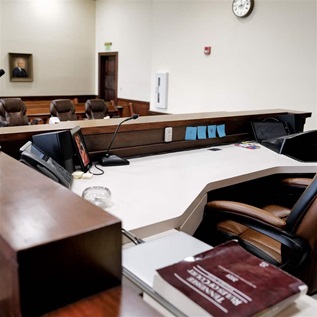Comments Submitted to the Federal Reserve by the Pew Safe Credit Cards Project
(Regulation Z, Reasonable and Proportional Penalty Charges and Other Rules Under the Credit CARD Act of 2009)
The Pew Health Group's Safe Credit Cards Project submitted comments to the Federal Reserve Board regarding the Board's proposed rules under Regulation Z (Docket No. R-1384). The rules cover “reasonable and proportional” penalty charges and other requirements under the Credit CARD Act of 2009.
- § 226.52 Limitations on Fees (Page 5)
- Comments on the general rule, 52(b)(1) (Page 5)
- We commend the Board's statement that “losses and associated costs (including the cost of holding reserves against potential losses) are not costs incurred by a card issuer as a result of violations of the account terms or other requirements for purposes of § 226.52(b)(1)(i).” (Page 5)
- We encourage the Board to clarify in the staff commentary or elsewhere that no overhead costs of any kind are to be included in an issuer's justification of cost for purposes of § 226.52(b)(1)(i). (Page 6)
- Specifically, the Board should prohibit cost justifications based on the expense of authorization systems. (Page 7)
- Likewise, the Board should clarify that any adjustment based on reasonable estimates of future changes in cost must not include cost increases due to the card issuer's business strategy. (Page 7)
- We urge the Board to eliminate the deterrence model provisions under 52(b)(1)(ii) altogether. Alternatively, if keeping these provisions, the Board should require regulatory pre-approval for any issuer model purporting to show the deterrence effect of penalty fees under the 52(b)(1)(ii) analysis, and carefully monitor testing efforts. (Page 7)
- Testing models under 52(b)(1) may be appropriate, but only with strong safeguards including regulatory approval of testing schemes. (Page 9)
- The Board should require all issuer justifications and models under § 226.52(b)(1) to be made public. (Page 9)
- Prohibited Fees, 52(b)(2) (Page 10)
- We generally support the prohibition of penalty fees that exceed the amount of the violation – 52(b)(2)(i)(A). (Page 10)
- We note, however, that the general prohibition as applied to late fees will only affect a minority of credit cardholders. (Page 10)
- We support the Board's prohibition of penalty fees for declined transactions, account inactivity, account closure and other penalty fees with no corresponding dollar violation, but request certain clarifications – 52(b)(2)(i)(B). (Page 11)
- Safe harbor, 52(b)(3) (Page 13)
- A safe harbor is appropriate, but only if reduces the size of penalty fees in the market today. (Page 13)
- The proposed safe harbor approach should be calibrated to include an allowable floor of $10, with the proposed 5% proportional penalty option and a maximum overall penalty fee of $40. (Page 14)
- The Board should not include additional consumer conduct-related tiering structures or incremental fees in the safe harbor rule. (Page 16)
- The Board should not allow any safe harbor thresholds to adjust automatically according to fluctuations in the consumer price index or other benchmarks. (Page 17)
- Comments on the general rule, 52(b)(1) (Page 5)
- Penalty interest charges and deferred interest penalties should be part of the Board's rules for “Reasonable and Proportional” penalties. (Page 18)
- The Board should create “reasonable and proportional” requirements for penalty interest charges within § 226.52(b) or a similar section, limiting penalty interest rates to a maximum of seven percentage points above base (non-penalty) interest rates. (Page 18)
- The Board's sense that Congress did not intend to apply the “reasonable and proportional” standard to annual percentage rates is unfounded with respect to penalty interest rate increases; and in fact, there is strong evidence indicating that Congress specifically wanted the Board to include penalty interest rate increases within the “reasonable and proportional” framework. (Page 19)
- Penalty rate increases, especially those on existing balances, impose potentially drastic penalties on the most vulnerable cardholders. (Page 21)
- For penalty rate increases applicable to existing balances, the Board should limit penalty APRs to no more than seven percentage points above base (non-penalty) APRs. (Page 22)
- “Reasonable and proportional” rules for penalty rate increases applicable only to future transactions may not be warranted at this time; however, the Board should collect information about the practice and evaluate the need for additional rules within 12-18 months. Specifically, the Board should require issuers to provide information detailing issuer repricing practices tied to late or over-the-limit transactions or other forms of penalty repricing, and this information should be publicly available. (Page 24)
- The developing trend of eliminating penalty APR disclosures (1) adds urgency to the need for Board regulation of penalty rates; and (2) suggests the need for additional disclosure rules (at a minimum, issuers should be required to disclose the maximum penalty rate that may apply to existing balances in case of delinquency). (Page 25)
- The Board should declare that all penalty charges triggered by late payments or similar account violations in conjunction with deferred interest programs, are penalty fees subject to the requirements of § 226.52(b). (Page 26)
- § 226.59 Reevaluation of Rate Increases (Page 27)
- General comments on the rule, § 226.59 (Page 27)
- The Board should establish clear, generally applicable guidelines for removing penalty interest rates when account violations have ceased. (Page 27)
- Just as the correlation between specific events – such as a late payment or an over-limit transaction – and the imposition of a penalty rate is clear and direct, so Congress intended a clear path to removal of the penalty. Therefore, the Board should state clear and direct guidance in § 226.59 regarding the removal of penalty rate increases once the underlying violations have passed. (Page 28)
- For any account that incurred penalty rates on January 1, 2009 or later, the Board should require a return to any non-penalty, advertised rate when the account becomes free from violations for six months or more. (Page 28)
Download the full PDF for more information.











